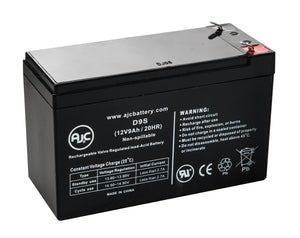Some Battery Technical Definitions Explained
SLA batteries may be low maintenance, but they are highly complex things. The fact that you’re sealing up some chemicals which when combined created a highly combustible environment that is used to power equipment is pretty amazing really. When you’re looking for a replacement battery, you may notice a few unusual technical terms that are not very obvious but may make a difference in the performance or lifespan or suitability of the battery as a replacement to a previous battery.

At BatteryClerk, we list out the technical specs on each of the product pages and have several tabs dedicated to these. This includes Info, Specs, Cross Reference, Resources and some have an FAQ’s section as well. These tabs contain some of these complicated technical terms so let’s have a look at some of the highlights.
Factory-Activated – this means the battery is filled with electrolyte already and is sealed and charged at the factory before being packed and shipping. Typically, these batteries should be sold and used in a timely manner, but it means that you don’t need to fill it with chemicals when it arrives. We have a useful blog post that may help to explain it further.
Maintenance-Free – while all batteries do require a little maintenance, this term is given to batteries that don’t need topping up with water as most of the charging gases are combined back to water inside the battery.
Exact OEM Replacement – OEM stands for “Original Equipment Manufacturer” and would be linked to a specific brand. These brands will often sell replacement batteries at staggeringly high prices, usually because of the brand name so when a company says Exact OEM Replacement, it means it provided by a third-party company but will be compatible to the original model just significantly cheaper.
High Impact PP Case – you may see this referenced on the Powersports products. The PP stands for Polypropylene and this definition means it can absorb high vibrations, bumping and bouncing around which often occurs on motorcycles or ATV’s and the like.
Voltage – this refers to the amount of electrical potential your battery holds. Usually, you want to get a battery with the voltage you need so something like an Alarm battery, 6V is plenty but for a UTV, you’ll need a 12 Volt unit. A good point of reference will be the original battery. Typically, you’ll want to match it or go higher if available, never lower.
Capacity (AH) – we refer to it as capacity, but it’s technically known as AH or amp hours. This requires a bit of math but generally refers to the amount of time that a battery will last during discharge.
Cold Cranking Amps (CCA) – Typically relevant for 12V batteries, cold cranking amps or CCA is a rating used in the battery industry to define a battery's ability to start an engine in cold temperatures. The rating refers to the number of amps a 12-volt battery can deliver at 0°F for 30 seconds while maintaining a voltage of at least 7.2 volts.
Terminals – there are a few different types of terminals which is especially relevant for replacement batteries because you really just want to match what is currently there rather than switching them which can be a pretty painful process. Terminal numbering for ours includes a bunch of F1 and F2 which look more like tabs as well as B and post and flag types.
Dimension – fairly self-explanatory here. You’re essentially looking at the measurements in the order of length by width by height (l x w x h) which will come in handy when you’re looking to match the size of a previous battery. Often the battery is seated in a fairly tight space so not having to make too many adjustments to accommodate is optimal.
Weight – also self-explanatory but also a little less of an issue than the size. Battery weight can contribute to performance on some equipment and of course some battery housing may be designed to accommodate certain weight so possibly there could be some strain on that if there is a great deal of movement.
Model Years – manufacturers may often change battery specs from model to model so we make sure to include the range of years when applicable a certain battery is most suited to. Check your equipment year to make sure you get the best match.
Cross Reference – this tab gives users a look at the model battery that our specific battery replaces. This is especially useful for those who actually know the current model battery their equipment uses, sometimes labels may be missing or casing scratched and hard to read so if you already know your battery model number, a quick search on our website will offer a best match.
Having some understanding of the technical terms we include on the batteryclerk.com website will hopefully help you in your decision-making process when looking for a replacement battery. Obviously we stand behind the quality of products we sell but we also want to make sure that customers are happy so we try to provide as much information as possible to help them purchase the best fit.


